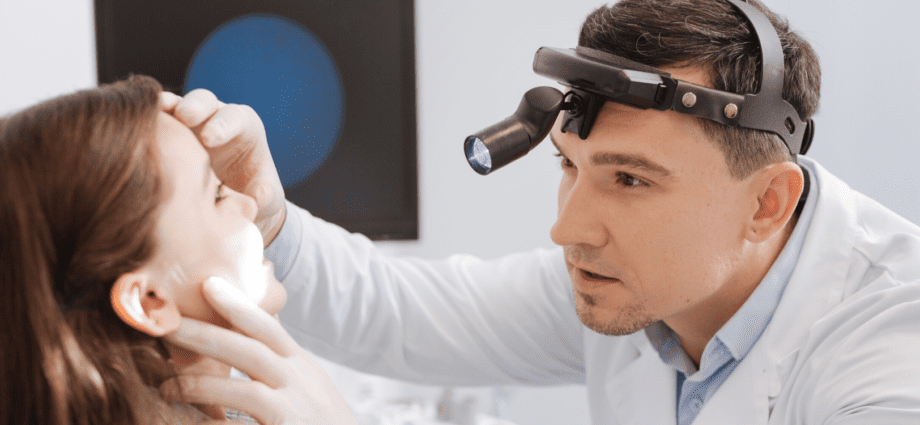Contents
Pediatric ENT: when and why to consult?
Difficulty hearing, recurrent ear infections, dizziness, sleep apnea or snoring… And here you are, pushing open the door of an ENT office. When you take Loulou there, it is better to choose a pediatric ENT specialist, that is to say a specialist in children.Because the child is not a miniature adult and the tests – for example – to measure hearing will obviously not be the same for a 3 year old boy as for a 45 year old man.
Who is the ENT?
ENT. 3 letters for otolaryngologist. “This specialist treats all pathologies and infections of the nose, throat and ears … but not only”, insists Dr Sonanda Bailleux, head of the ENT and head and neck surgery department of the pediatric hospitals of Nice CHU Lenval. “Of course, he takes care of what’s inside, but he can also intervene on the surface. By repairing, for example, protruding ears. We also manage congenital nevi (moles or birthmarks). “
When to consult?
The ENT is the specialist in hearing disorders, it is well known. Most often, it is the pediatrician who will refer his little patient to this specialist. But a few clues can also alert parents:
- If your child often turns up the volume on the TV;
- If he constantly asks you to repeat;
- If he doesn’t jump when a door slams;
- If your child has a speech delay.
Parents are excellent observers, so if they have any doubts, they should not hesitate to consult an ENT. But it would be a shame to summarize this specialist only with hearing disorders, as his field of expertise is wide. “The reasons for consultation are most often infectious. First with ear infections, which stress parents a lot. “Because of their anatomy, toddlers are naturally more vulnerable to infections of the ENT sphere. “Another frequent reason for consultation, sleep disorders: apnea, snoring … Let us also mention, among many other reasons for pushing open the door of an ENT office, deformities of the face and neck, dysphonia or hoarse voices. , etc. ” The list is far from being exhaustive.
How is a consultation going?
Each consultation begins with an interview of the little patient and his parents, to discuss his symptoms and his history. “We then do a complete examination of the ears, nose and mouth,” explains Dr Bailleux. “If necessary, we add additional examinations.
Hearing tests, for example. From 3-4 years old, the child can wear a helmet, and we will ask him if he hears sounds, more or less loud. To test the hearing of the little ones, we will bet on the game, for example by asking them to add a cube on a stack when they hear a sound. We also help ourselves with cartoons or soft toys. “
There are also so-called “objective” hearing tests. This means that they do not require the cooperation of the child. Screening for deafness in all newborns, even before leaving the maternity hospital, is one of them.
“Another test that we perform frequently is nasofibroscopy. »Nothing like exploring the upper airways, which allows, for example, to detect an obstacle responsible for sleep apnea. “It is a flexible endoscope, connected to a camera, which allows us to explore the air cavities. It’s unpleasant, like a Covid test, but it only lasts a few tens of seconds. “
Management of hearing loss
Less decibels, and the fact of learning to speak, to read, to make friends, can turn into an obstacle course. Sometimes the hearing loss is temporary, such as when the child has a severe ear infection. Fluid behind the eardrum reduces sound. This is the leading cause of hearing loss, and mainly affects children under 7 years old.
Other times the loss is final. These are sensorineural hearing loss, which affects the inner ear. For recurrent serous ear infections or acute otitis media, if medication does not solve the problem, fitting tympanal ventilators – or yoyos – is often the solution. These small hollow tubes evacuate the liquid blocked behind the eardrum. They are removed after a few months if they have not already fallen on their own. For sensorineural deafness, it is necessary to fit. With a hearing aid, sound amplifier. When the hearing loss is very severe, there is the cochlear implant.
Tonsillectomy, adenoidectomy & co
Repeated ear infections or rhinitis, snoring accompanied by sleep apnea or exclusive mouth breathing are indications for removing adenoids. As for the tonsils, too frequent tonsillitis, hypertrophic tonsils may justify ablation. The tonsil surgery takes about half an hour. Under general anesthesia, the surgeon introduces the instruments through the mouth to remove, most of the time partially, the excessively large tonsils. Often, tonsillectomy is accompanied by adenoidectomy, that is, removal of the adenoids. In a few moments, the surgeon, equipped with a small curette, scrapes the bundles of adenoids.










